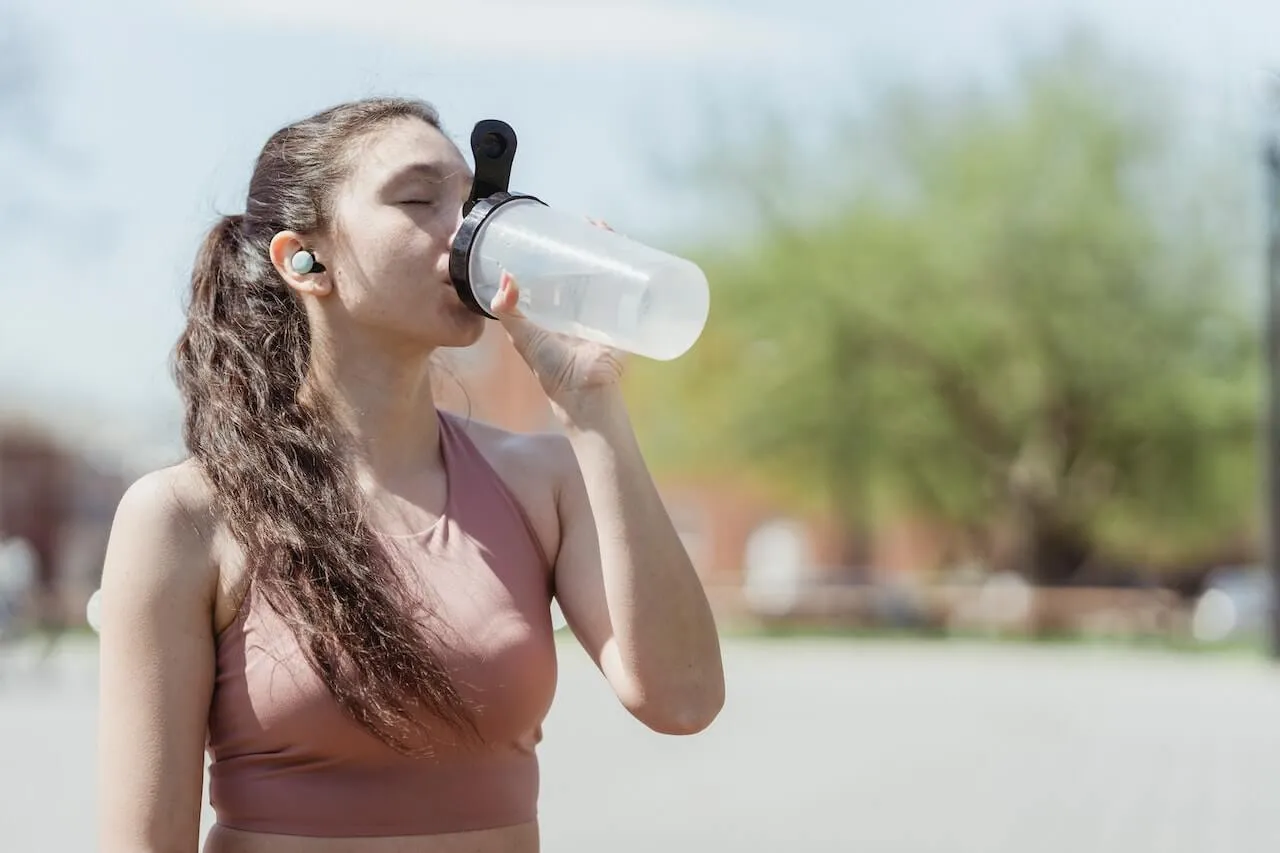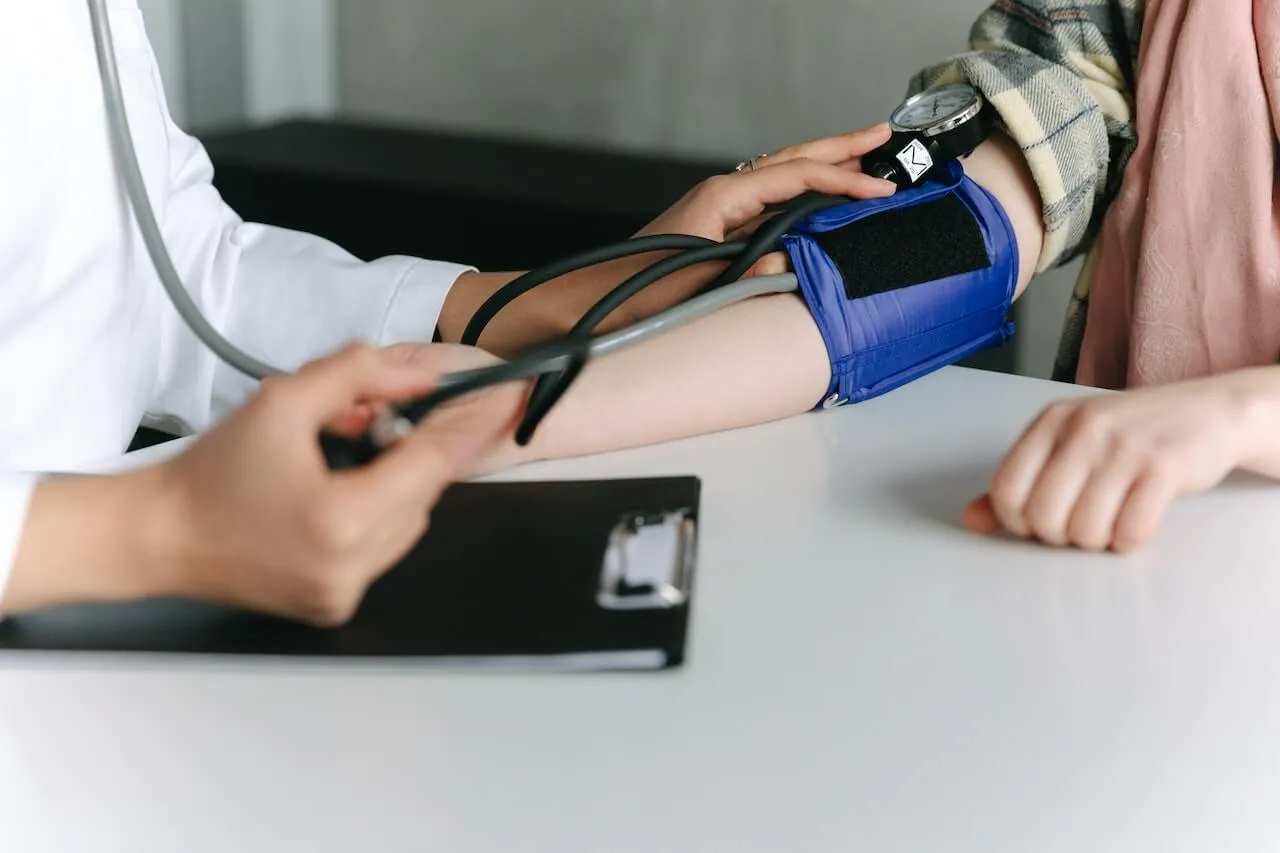Persistently high blood sugar damages tissues and organs throughout your body, including the inner lining of blood vessels and the kidneys. When blood vessels are narrowed due to damage from chronically high blood sugar, your heart must pump harder, which increases blood pressure. Since high blood pressure and diabetes share common risk factors, avoiding abnormally high blood sugar can help reduce your risk of high blood pressure.
Is there a connection between high blood pressure and high blood sugar?
High blood pressure and high blood sugar frequently occur together. High blood pressure is twice as common in people with diabetes as compared to people without the disease. Likewise, people with high blood pressure are more likely than those with normal blood pressure to develop insulin resistance and diabetes. The major cause of illness and death in people with diabetes is cardiovascular disease, a condition made worse by having high blood pressure.1
Both high blood sugar and high blood pressure are characterized by:1-3
- Inflammation
- Immune system activation
- Oxidative stress
- Obesity
- Increased insulin
- Increased triglycerides
- Metabolic disease
<p class="pro-tip"><strong>Learn about </strong> <a href=metabolic-health>metabolic health and how to improve it</a>.</p>
Why is high blood pressure so underdiagnosed and under-treated?
About 1.28 million adults worldwide have high blood pressure, but only 42% have been diagnosed, and 21% have their blood pressure under control. High blood pressure is a major cause of premature death worldwide.4
Blood pressure is the force that circulating blood puts on the inner lining of your blood vessels. The left ventricle in your heart is a muscular chamber that contracts and provides the force that circulates blood throughout your body. When your blood vessels are narrowed due to fatty deposits or stiffened as glucose attaches to proteins in blood vessels, your heart must apply greater force to circulate your blood, and your blood pressure increases.
High blood pressure rarely causes any symptoms. Most people who have high blood pressure don’t know they have the condition unless they have their blood pressure checked.
When blood pressure is measured, it is recorded as a ratio of two numbers:
- Systolic blood pressure: This higher pressure occurs when the left ventricle contracts.
- Diastolic blood pressure: This lower pressure occurs when the left ventricle relaxes.
The American Heart Association categorizes normal and high blood pressure according to these parameters.
Normal blood pressure (must have both)
- Systolic blood pressure less than 120 mm Hg
- Diastolic blood pressure less than 80 mm Hg
Elevated blood pressure (must have both)
- Systolic blood pressure between 120 and 129 mm Hg
- Diastolic blood pressure less than 80 mm Hg
High blood pressure, stage 1 (can have either)
- Systolic blood pressure between 130 and 139 mm Hg
- Diastolic blood pressure between 80 and 89 mm Hg
High blood pressure, stage 2 (can have either)
- Systolic blood pressure 140 mm Hg or higher
- Diastolic blood pressure 90 mm Hg or higher
Hypertensive crisis (can have either)
- Systolic blood pressure higher than 180 mm Hg
- Diastolic blood pressure higher than 120 mm Hg
A hypertensive crisis is a medical emergency.
There is a linear relationship between blood pressure and the risk of cardiovascular disease. The higher your blood pressure, the greater your risk of heart attacks, heart failure, stroke, and kidney disease.5
Why is high blood sugar (diabetes) so underdiagnosed and under-treated?
Type 2 diabetes is a serious chronic disease that is underdiagnosed and under-treated. Many people do not recognize the symptoms associated with diabetes because it slowly progresses over 7 to 10 years. Type 2 diabetes develops when your pancreas cannot make enough insulin to effectively move glucose (sugar) out of your bloodstream and into your body cells, or your body cells become less responsive to insulin.
Symptoms of high blood glucose:
- Excessive thirst
- Frequent urination
- Extreme fatigue
- Increased hunger
- Blurry vision
- Delayed wound healing
- Yeast infections
- Tingling or numbness in the hands and feet
As with high blood pressure, the best way to learn whether you have high blood sugar is to test yourself. You can check your blood pressure at home or in a medical provider’s office. You can also check your blood glucose levels at home using a continuous glucose monitor (CGM) or by being tested in a medical lab.
Fasting blood sugar parameters according to the American Diabetes Association:6
- Optimal: less than 100 mg/dL
- Prediabetes: 100 to 125 mg/dL
- Diabetes: 126 mg/dL or higher
<p class="pro-tip"><strong>Learn more about </strong> <a href=average-glucose-ranges>normal blood sugar levels for people without diabetes</a>.</p>
HbA1C is a measurement that gives an average blood sugar for the previous three months. The goal to be metabolically healthy is to have an HbA1C of less than 5.7%.7

Does high blood sugar (diabetes) lead to high blood pressure?
There is a strong association between high blood pressure and high blood sugar, as the two conditions commonly occur together. Insulin resistance is thought to lead to changes in blood vessels and the kidneys, which can ultimately cause high blood pressure.8
Excess glucose in the blood can bind to proteins lining blood vessels, causing changes in their structure. When blood vessels become damaged, they narrow and accumulate plaque. Over time, blood vessels harden, a process called atherosclerosis. When this occurs, your blood pressure increases.
Excess stimulation of the renin-angiotensin-aldosterone and sympathetic nervous systems is commonly seen in diabetes. These two systems increase blood volume and constrict blood vessels, both of which increase blood pressure.9
Lowering blood sugar can reduce the risk of changes in blood vessels and the kidneys that contribute to high blood pressure and cardiovascular disease.10
Does high blood pressure lead to high blood sugar (diabetes)?
While a causal relationship between high blood sugar and high blood pressure seems more likely, there is accumulating evidence that the relationship is bidirectional. People with high blood pressure are more likely to also have problems with carbohydrate metabolism.2 In a cohort study of 12,550 adults, type 2 diabetes was almost 2.5 times more common in people with high blood pressure than in those with normal blood pressure.9
Having insulin resistance predicts an increased risk of high blood pressure.8,10 Insulin resistance plays an important role in the blood vessel changes that cause high blood pressure.9 Conversely, excessive blood vessel stiffness that causes high blood pressure also worsens insulin resistance.9 Lowering blood pressure can reduce damage to blood vessels and decrease the risk of cardiovascular disease and diabetes complications, and lowering blood sugar can reduce the risk of high blood pressure.
<p class="pro-tip"><strong>Learn about </strong> <a href=reverse-insulin-resistance>reversing insulin resistance through your diet</a>.</p>
How to lower high blood pressure and blood sugar naturally
High blood pressure and high blood sugar share many of the same risk factors, including obesity, metabolic syndrome, and excess inflammation. They also both contribute to cardiovascular disease. Lifestyle changes that reduce the risk of high blood pressure, diabetes, obesity, and metabolic syndrome will improve cardiovascular health.
Eat a Healthy Diet
The prevalence of high blood pressure in societies that prefer a western diet is around 30%. In societies that consume diets high in fruits, vegetables, and nuts, only about 1% of the population has high blood pressure.11 Choose a diet rich in whole grains, fruits, vegetables, polyunsaturated fats, and low-fat dairy products. Adopting a healthy diet such as the dietary approaches to stop hypertension (DASH) diet may reduce systolic blood pressure by 8 to 14 mm Hg.12
The DASH diet also encourages increasing calcium, magnesium, and potassium and reducing sodium intake.
- Increase potassium intake: Potassium and sodium work together for proper nerve and muscle function. Since sodium and potassium work together and are regulated by the kidney together, too little potassium means that your body holds onto both potassium and sodium.13 Four to five servings of fruits and vegetables will usually provide the recommended 1,500 to 3,000 mg of potassium.
- Reduce salt intake: Increased sodium intake (salt) leads to increased fluid retention, which increases blood volume and, in some people, blood pressure.14 Reduce sodium intake to less than or equal to 2,400mg of sodium or, even better, less than 1,500 mg per day. Avoid adding salt to food at the table. Limit your intake of highly processed foods high in sodium.15 Following the 1,600 mg sodium maximum in the DASH diet can have the same effect on blood pressure as taking a blood pressure medication.16 Drinking plenty of water can help flush excess sodium from your body, and drinking water can also lower blood sugar.
- Increase magnesium intake: Magnesium is a mineral that helps widen blood vessels, which decreases blood pressure. A meta-analysis of 141 studies shows that magnesium lowers systolic blood pressure by about 3 to 4 mm Hg and diastolic by about 2 to 3 mm Hg.17 Pumpkin seeds, potatoes, peanuts, yogurt, cashews, black beans, and dark chocolate are good sources of magnesium.
- Feed your microbiome: Consuming probiotics may also improve blood pressure and blood sugar control. In a review evaluating nine clinical studies, systolic blood pressure decreased by 3.6 mm Hg and diastolic blood pressure decreased by 2.4 mm Hg after participants consumed probiotics for at least two months.18 Probiotics can also improve glucose control and lipid metabolism.19
- Eat more cinnamon: Add cinnamon to your diet. Cinnamon can lower blood sugar and increase insulin sensitivity. An analysis of multiple studies showed that cinnamon might also lower triglycerides, total cholesterol, waist circumference, and blood pressure, all of which increase your risk for cardiovascular disease.20
- Eat dark chocolate: Dark chocolate is high in flavonoids, which are nutrients that can dilate your blood vessels. When blood vessels are dilated, resistance to blood flow is decreased, and so is blood pressure.21

Reduce Stress
Stress stimulates the sympathetic nervous system. The part of the nervous system that prepares your body for “fight-or-flight,” the sympathetic nervous system, narrows blood vessels and increases the strength of your heart’s contractions. Both actions can increase blood pressure. Stress can also cause high blood sugar. Meditation, spending time outdoors, spending time with people or pets, and exercising are all strategies people adopt to help manage stress.
Quit Smoking
Tobacco use can increase blood pressure by damaging the inner lining of blood vessels and by stimulating the sympathetic nervous system. Smoking stiffens blood vessels, which increases resistance and raises blood pressure. In one study, researchers found that smoking even a single cigarette increases blood vessel stiffness in both smokers and nonsmokers.22 Smoking increases the risk of heart disease secondary to high blood pressure by two to three times. However, this risk decreases within two to three years if you stop smoking!23
Nicotine can also induce insulin resistance. While cigarette smokers may be less sensitive to insulin while smoking, their insulin sensitivity increases within one to two weeks after they stop smoking.24
{{mid-cta}}
Exercise Regularly
Regular exercise can help shed excess pounds, reduce stress, and improve cardiovascular function. Physical activity strengthens the heart so it can push out more blood with each contraction. Exercise can also lower blood sugar quickly. Exercise increases skeletal muscle sensitivity to glucose, and an increase in muscle mass can increase the amount of glucose skeletal muscle can absorb from your bloodstream.25,26
Exercise decreases systolic blood pressure by about 11 mm Hg and diastolic by 8 mm Hg in about 75% of people with high blood pressure. Researchers noted the following:27
- Exercise seems to lower blood pressure more in women than in men.
- Exercise seems to lower blood pressure in middle age groups more than in younger or older populations.
- Exercising at a lower to moderate intensity seems to be as or even more beneficial than exercising at a higher intensity.
- Exercise has a greater impact on blood pressure in Asian and Pacific Island populations than in Caucasians.
- Exercise benefits may be affected by genetic predisposition.
The American College of Sports Medicine (ACSM)28 and the U.S. Department of Health and Human Services Physical Activity Guidelines29 jointly recommend aiming for at least 150 to 300 minutes of moderate-intensity aerobic physical activity; or at least 75 to 150 minutes of vigorous-intensity aerobic physical activity; or an equivalent combination of moderate- and vigorous-intensity activity throughout the week. Do muscle strengthening exercises that target every major muscle group at least twice a week.
<p class="pro-tip"><strong>Learn more about </strong> <a href=anaerobic-exercise>the many health benefits of strength training</a>.</p>

Limit Alcohol Use
Excessive alcohol intake can increase blood sugar and blood pressure. Alcohol consumption beyond the recommended guidelines (maximum of 1 drink per day for women and two drinks per day for men) is associated with higher systolic blood pressure. The recommendations for maximum alcohol intake vary based on race/ethnicity, gender, body size, and medical comorbidities.15 For every 10 grams of alcohol consumed, there is an approximately 1 mm Hg increase in blood pressure, regardless of alcohol type. An increase in blood pressure secondary to regular alcohol use is reversible with 2 to 4 weeks of abstinence or a substantial reduction in alcohol intake.30
Lose Excess Pounds
Data from the Framingham Heart Study showed that excess body weight accounted for about 26% of cases of high blood pressure in men and 28% in women.9,31 A 22-pound increase in body weight increases the risk of heart disease by 12% and raises systolic blood pressure by an average of 3 mm Hg and diastolic blood pressure by 2.3 mm Hg.32
The Seventh Report of the Joint National Committee on Prevention, Detection, Evaluation, and Treatment of High Blood Pressure found that for every 22 pounds of weight loss, you can experience a 5 to 20 mm Hg decrease in systolic blood pressure.5
Losing excess pounds can reduce blood pressure and help with blood sugar control.33 To track your progress toward better metabolic health, monitor:
- Blood pressure: Aim for a systolic blood pressure of under 120 mm Hg and a diastolic blood pressure of under 80 mm Hg.
- Blood sugar: Aim for a fasting blood sugar of less than 100 mg/dl.
- Weight: Aim for a BMI of between 18.5 and 24.9.
- Waist circumference: Aim for a waist circumference of less than 35 inches in women and less than 40 inches in men.
Prioritize Sleep
Obstructive sleep apnea is a potentially serious sleep disorder. It is characterized by snoring and frequent sleep interruptions throughout the night. Sleep interruptions cause surges in systolic and diastolic blood pressure, which elevates blood pressure throughout the night. Blood pressure may remain high even after breathing returns to normal. Sleep apnea treatment can improve breathing and reduce blood pressure.34
Sleep deprivation can contribute to high blood pressure. Lack of sleep can stimulate cortisol release and activate the sympathetic nervous system. This can increase the likelihood of high blood pressure, high blood sugar, obesity, and cardiovascular disease.35
Aim for 7 to 8 hours of restful sleep each night. See your doctor if you have obstructive sleep apnea or other health problems that may increase your risk of high blood pressure.
<p class="pro-tip"><strong>Learn about </strong> <a href=improving-sleep-quality-how-to-not-wake-up-tired>how to get better quality sleep</a>.</p>
How long does it take to lower high blood pressure and sugar?
Unless stress or exercise is causing a short-term increase in your blood pressure, you will not be able to lower your blood pressure quickly. Making any necessary lifestyle changes can additively improve your blood pressure and decrease your lifetime risk of cardiovascular disease.
There are several ways you can lower your blood sugar fast. Read about 11 natural ways to stabilize your blood glucose levels quickly.
Final Takeaways
High blood pressure and high blood sugar are common comorbid diseases, especially in populations that consume a western-style diet. They both increase your risk of cardiovascular disease, which is the leading cause of premature death in the developed world.
Processed foods high in sugar stimulate the sympathetic nervous system, which increases heart rate and blood pressure.10 Refined carbohydrates that are easily converted to glucose cause glucose spikes which, over time, can increase your risk for diabetes and high blood pressure.36
Make any necessary lifestyle changes now to normalize your blood sugar and protect your blood vessels. These changes can payoff with a reduced risk of cardiovascular disease and an extended, healthier lifespan.
Topics discussed in this article:
References
- Petrie, J. R., Guzik, T. J., & Touyz, R. M. (2018). Diabetes, Hypertension, and Cardiovascular Disease: Clinical Insights and Vascular Mechanisms. The Canadian journal of cardiology, 34(5), 575–584. https://doi.org/10.1016/j.cjca.2017.12.005
- Tsimihodimos, V., Gonzalez-Villalpando, C., Meigs, J. B., & Ferrannini, E. (2018). Hypertension and Diabetes Mellitus: Coprediction and Time Trajectories. Hypertension (Dallas, Tex. : 1979), 71(3), 422–428. https://doi.org/10.1161/HYPERTENSIONAHA.117.10546
- Cheung, B. M., & Li, C. (2012). Diabetes and hypertension: is there a common metabolic pathway?. Current atherosclerosis reports, 14(2), 160–166. https://doi.org/10.1007/s11883-012-0227-2
- World Health Organization. Hypertension. Accessed July 30, 2022. https://www.who.int/news-room/fact-sheets/detail/hypertension
- Chobanian AV, Bakris GL, Black HR, et al. The Seventh Report of the Joint National Committee on Prevention, Detection, Evaluation, and Treatment of High Blood PressureThe JNC 7 Report. JAMA. 2003;289(19):2560-2571. doi:10.1001/jama.289.19.2560
- Beulens J, Rutters F, Rydén L, et al. Risk and management of pre-diabetes. European Journal of Preventive Cardiology. 2020;26(2_suppl):47-54. doi:10.1177/2047487319880041
- Sherwani SI, Khan HA, Ekhzaimy A, Masood A, Sakharkar MK. Significance of HbA1c Test in Diagnosis and Prognosis of Diabetic Patients. Biomark Insights. 2016;11:95-104. doi:10.4137/bmi.S38440
- Ferrannini E, Cushman WC. Diabetes and hypertension: the bad companions. The Lancet. 2012/08/11/ 2012;380(9841):601-610. https://doi.org/10.1016/S0140-6736(12)60987-8
- Jia G, Sowers JR. Hypertension in Diabetes: An Update of Basic Mechanisms and Clinical Disease. Hypertension. Nov 2021;78(5):1197-1205. doi:10.1161/hypertensionaha.121.17981
- DiNicolantonio JJ, Lucan SC. The wrong white crystals: not salt but sugar as aetiological in hypertension and cardiometabolic disease. Open Heart. 2014;1(1):e000167. doi:10.1136/openhrt-2014-000167
- Staruschenko A. Beneficial Effects of High Potassium: Contribution of Renal Basolateral K(+) Channels. Hypertension. Jun 2018;71(6):1015-1022. doi:10.1161/hypertensionaha.118.10267
- Chobanian AV, Bakris GL, Black HR, et al. The Seventh Report of the Joint National Committee on Prevention, Detection, Evaluation, and Treatment of High Blood Pressure: the JNC 7 report. Jama. May 21 2003;289(19):2560-72. doi:10.1001/jama.289.19.2560
- Perez V, Chang ET. Sodium-to-Potassium Ratio and Blood Pressure, Hypertension, and Related Factors. Advances in Nutrition. 2014;5(6):712-741. doi:10.3945/an.114.006783
- Grillo A, Salvi L, Coruzzi P, Salvi P, Parati G. Sodium Intake and Hypertension. Nutrients. 2019;11(9):1970.
- Bazzano LA, Green T, Harrison TN, Reynolds K. Dietary approaches to prevent hypertension. Curr Hypertens Rep. Dec 2013;15(6):694-702. doi:10.1007/s11906-013-0390-z
- Sacks FM, Svetkey LP, Vollmer WM, et al. Effects on Blood Pressure of Reduced Dietary Sodium and the Dietary Approaches to Stop Hypertension (DASH) Diet. New England Journal of Medicine. 2001;344(1):3-10. doi:10.1056/nejm200101043440101
- Kass L, Weekes J, Carpenter L. Effect of magnesium supplementation on blood pressure: a meta-analysis. European Journal of Clinical Nutrition. 2012/04/01 2012;66(4):411-418. doi:10.1038/ejcn.2012.4
- Khalesi S, Sun J, Buys N, Jayasinghe R. Effect of probiotics on blood pressure: a systematic review and meta-analysis of randomized, controlled trials. Hypertension. Oct 2014;64(4):897-903. doi:10.1161/hypertensionaha.114.03469
- Hu YM, Zhou F, Yuan Y, Xu YC. Effects of probiotics supplement in patients with type 2 diabetes mellitus: A meta-analysis of randomized trials. Med Clin (Barc). Apr 21 2017;148(8):362-370. Efectos del suplemento de probióticos en pacientes con diabetes mellitus tipo 2: metaanálisis de ensayos aleatorizados. doi:10.1016/j.medcli.2016.11.036
- Kutbi EH, Sohouli MH, Fatahi S, et al. The beneficial effects of cinnamon among patients with metabolic diseases: A systematic review and dose-response meta-analysis of randomized-controlled trials. Critical Reviews in Food Science and Nutrition. 2022/12/16 2022;62(22):6113-6131. doi:10.1080/10408398.2021.1896473
- Hooper L, Kroon PA, Rimm EB, et al. Flavonoids, flavonoid-rich foods, and cardiovascular risk: a meta-analysis of randomized controlled trials. The American Journal of Clinical Nutrition. 2008;88(1):38-50. doi:10.1093/ajcn/88.1.38
- Mahmud A, Feely J. Effect of smoking on arterial stiffness and pulse pressure amplification. Hypertension. Jan 2003;41(1):183-7. doi:10.1161/01.hyp.0000047464.66901.60
- Rehill N, Beck CR, Yeo KR, Yeo WW. The effect of chronic tobacco smoking on arterial stiffness. Br J Clin Pharmacol. Jun 2006;61(6):767-73. doi:10.1111/j.1365-2125.2006.02630.x
- Bergman BC, Perreault L, Hunerdosse D, et al. Novel and Reversible Mechanisms of Smoking-Induced Insulin Resistance in Humans. Diabetes. 2012;61(12):3156-3166. doi:10.2337/db12-0418
- Chia CW, Egan JM, Ferrucci L. Age-Related Changes in Glucose Metabolism, Hyperglycemia, and Cardiovascular Risk. Circulation Research. 2018;123(7):886-904. doi:doi:10.1161/CIRCRESAHA.118.312806
- Richter EA, Sylow L, Hargreaves M. Interactions between insulin and exercise. Biochem J. Nov 12 2021;478(21):3827-3846. doi:10.1042/bcj20210185
- Hagberg JM, Park JJ, Brown MD. The role of exercise training in the treatment of hypertension: an update. Sports Med. Sep 2000;30(3):193-206. doi:10.2165/00007256-200030030-00004
- American College of Sports Medicine. Trending Topic | Physical Activity Guidelines. Accessed July 21, 2022. https://www.acsm.org/education-resources/trending-topics-resources/physical-activity-guidelines
- U.S. Department of Health and Human Services. 2008 Physical Activity Guidelines for Americans. Accessed July 21, 2022. https://health.gov/sites/default/files/2019-09/paguide.pdf
- Puddey IB, Beilin LJ. Alcohol is bad for blood pressure. Clin Exp Pharmacol Physiol. Sep 2006;33(9):847-52. doi:10.1111/j.1440-1681.2006.04452.x
- Garrison RJ, Kannel WB, Stokes J, 3rd, Castelli WP. Incidence and precursors of hypertension in young adults: the Framingham Offspring Study. Prev Med. Mar 1987;16(2):235-51. doi:10.1016/0091-7435(87)90087-9
- Din-Dzietham R, Liu Y, Bielo M-V, Shamsa F. High Blood Pressure Trends in Children and Adolescents in National Surveys, 1963 to 2002. Circulation. 2007;116(13):1488-1496. doi:doi:10.1161/CIRCULATIONAHA.106.683243
- U.S. Department of Health and Human Services. Your Guide to Lowering Blood Pressure. 2003. https://www.nhlbi.nih.gov/files/docs/public/heart/hbp_low.pdf
- Dopp JM, Reichmuth KJ, Morgan BJ. Obstructive sleep apnea and hypertension: mechanisms, evaluation, and management. Curr Hypertens Rep. Dec 2007;9(6):529-34. doi:10.1007/s11906-007-0095-2
- Palagini L, Bruno RM, Gemignani A, Baglioni C, Ghiadoni L, Riemann D. Sleep loss and hypertension: a systematic review. Curr Pharm Des. 2013;19(13):2409-19. doi:10.2174/1381612811319130009
- Brown IJ, Stamler J, Horn LV, et al. Sugar-Sweetened Beverage, Sugar Intake of Individuals, and Their Blood Pressure. Hypertension. 2011;57(4):695-701. doi:doi:10.1161/HYPERTENSIONAHA.110.165456




.svg)










.svg)
.svg)
.svg)
.svg)
.svg)
.svg)
.svg)
